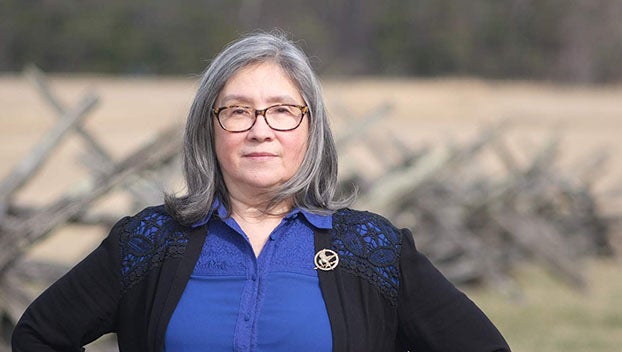PE Discusses Overlay District
Published 3:32 pm Tuesday, January 15, 2013
PRINCE EDWARD – The County's planning commission will hold a public hearing on a proposed amendment to the County's ordinance that would create a corridor overlay district on Tuesday, January 22.
“The purpose of the amendments to the Zoning Ordinance included in the Corridor Overlay District are to protect the County's scenic beauty and viewsheds, enhance levels of transportation service along the major roads, and increase property values; with specific attention given to access management, multimodal transportation, landscaping, and site design,” a summary description detailed in the board of supervisors' January board packet.
The proposed district, specifically, would apply width-wise along the county's major corridors 1,000 feet from the public right-of-way on both sides of the highway.
That highway list includes Route 15 from Farmville Town limits north to the Appomattox River and from Town limits south to State Route 665 at Worsham.
But it would also apply along parts of Route 460, 360 and the new Route 786.
Portions of the Route 460 corridor that would apply include one mile in each direction from the centers of Pamplin, Prospect, Tuggle and Rice. The Route 360 corridor would track from a distance of one mile in each direction from Green Bay, Meherrin and Virso. And, while Route 786, or Granite Falls Boulevard has yet to open, the overlay district would extend from its intersection with U.S. Route 15 to the intersection of State Route 628, or Zion Hill Road.
“…We've looked at the corridor overlay district for a considerable number of years,” County Administrator Wade Bartlett told supervisors. “The planning commission's completed that process. They've extended it a little more than what the original vision was, which was just Route 15 South.”
Bartlett emphasized that it's “just a draft” right now and that the commission could make changes to it after they hold the public hearing.
“Will citizens have access to this?” asked Leigh District Supervisor Don Gantt. “Because I can tell you there's some stuff in there that, as a business owner, some of this stuff's nuts.”
(Bartlett would note that it was advertised. A copy of the proposal is available through the county's website; a link is listed under Government under meetings and events.)
Gantt would later note, “I would encourage any business owner in the county, I would encourage anybody who has any commercial property undeveloped in the county…anybody that thinks they may use something commercially in their lifetime to take a good look at this.”
He further added, “If it were up to me, I would exempt my whole district from it. I mean, it's nuts.”
Lockett District Supervisor Robert “Bobby” Jones, the board's representative on the planning commission, however, offered that he has different feelings about it.
Maybe they want to keep the appearances of properties coming into the county looking good, he suggested.
“…Maybe some of it could be altered some, Jones said, “I think a lot of it is being followed in a lot of areas in the same manner as what we're proposing here,” Jones said.
Bartlett would emphasize that it is only for commercial businesses. Agriculture and residential are exempt.
Jones would cite that it's only certain corridors that they're protecting.
“If it was just the Route 15, you know, I'm not crazy about everything in it, but I know it can be worked out,” Gantt said. “This thing goes all over the county like an octopus.”
Still, Bartlett highlighted, existing businesses would be grandfathered.
“Growth has got to come from somewhere,” Gantt said. “And when you hear business owners go 'Red tape,' this is it.”
The January 22 public hearing will begin at 7:30 p.m.
While the proposed district exempts agricultural use types and permitted residential uses and interior alterations to a building or structure having no effect on the exterior appearance, the biggest impact would be to properties earmarked for commercial development.
The proposed district would specifically impact design standards, addressing such areas as access and circulation, parking lots, pedestrian circulation (sidewalks and crosswalks), new or redeveloped building design, landscaping, utilities, signs and lighting.
Among its provisions:
*The design and construction of new or redeveloped buildings for commercial or civic use are to be based on and coordinated with the scale, mass, height, materials, color, texture, construction methods and orientation of nearby buildings as suggested in a design guide. Trademark buildings or design features are also to be subject to the design standards and may require modification.
*All utility lines, including electric, telephone, CATV, and gas are to be installed underground in the highway corridor. It includes lines serving individual sites as well as an overall project.
*Any commercial development having more than one business in a single building or in connected buildings must erect a single monument-style shared sign for all businesses (though each individual business is permitted to have a single building-mounted sign); each parcel occupied by a building is allowed one freestanding sign that is not to exceed 30 square feet on each face (though auto service stations are permitted an additional 20 square feet on each face to advertise the price of fuel); freestanding signs are to be mounted on bases a maximum of three feet in height (though the zoning administrator or planning commission have the option to approve a taller base) and no freestanding sign is to exceed 15 feet from grade; freestanding signs for shopping centers would be allowed ten square feet of area per business and an additional 25 square feet of space would be allowed to identify the shopping center as a whole; signs are to be scaled to the building or portion of the building served and coordinated with the architecture; inflatable figures or signs are not permitted; and banners may be permitted for temporary use. The plan also details specific types of signs that are allowed.
*Exterior lighting is limited to that necessary for safety, security and to complement architectural character; no light is to spill onto an adjacent property or interfere with the character of the surrounding area; and all light sources must be down-shielded and no light pylon is to be more than 20 feet high.
*Access is expected to be used to the greatest possible extent in preparation of a site design. The proposal specifically outlines a provision of shared entrances, inter-parcel connections or on-site service drives connecting adjacent properties, access from a secondary road or street as opposed to the corridor highway, and that access points should be located the greatest possible distance from any intersection.
*Parking lots are to be located on the sides and rear of the buildings they serve to the greatest possible extent; parking lots are to be designed to minimize impervious surfaces and mitigate stormwater runoff. They are also to be interconnected with adjacent parcels whenever possible and recessed islands are to be provided at the end of any parking bay abutting an aisle or access way. Islands are to have a concrete or rolled-asphalt curb, with cuts to allow stormwater infiltration; each island is to be at least nine feet wide, extend the length of the adjacent parking space or bay and landscaped with grass, shrubs or trees.
*A continuous sidewalk of at least five feet is to be provided from any public sidewalk or the end of any parking area crosswalk to all customer entrances of the building.





